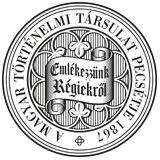Századok – 2000
TANULMÁNYOK - Tóth István György: Szent Ferenc követői vagy a szultán katonái? Bosnyák ferencesek a hódoltsági misszióban 747
SZENT FERENC KÖVETŐI VAGY A SZULTÁN KATONÁI? 799 not speak Hungarian, they were allowed to celebrate mass, baptize, and the nobles were able to understand their Latin preaching. It was in the beginning of 1630 that a Bosnian Franciscan called Stefano a Salina arrived from the Temes region to Transylvania with three other friars, dressed as laymen. After György I Rákóczi had issued a privilege for them in 1632 they could begin their regular activity there. A number of Bosnian Franciscans even followed the missionary Fra Marco Bandini from the Temes region to Moldavia, but they all left the principality after Bandini's death in 1650. The mission of the Bosnian Franciscans was most successful in the regions where there lived a considerable southern Slav population. Although they finally had to leave Moldavia and Transylvania, they launched a highly successful mission in Bulgaria (later taken over by Bulgarian friars, it is true), and in Bosnia they had always remained unrivalled. In Ottoman Hungary the preconditions of their successful activity were the good relations with the Ottoman authorities and the ever growing proportion of the southern Slav population. Of all the missions in Ottoman Hungary supported by the Sacra Congregatio that of the Bosnian Franciscans turned out to be the most effective. Although the Hungarian mission comprised a mere one tenth of the friars belonging to the Bosnian province, for the Hungarian chuch under Ottoman rule this external help was vital.
